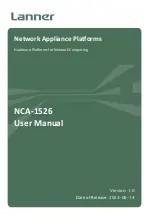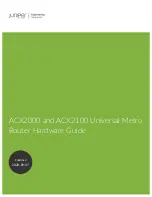
M
ANAGING
S
YSTEM
F
ILES
2-13
Managing System Files
The switch’s flash memory supports three types of system files that can be
managed by the CLI program, web interface, or SNMP. The switch’s file
system allows files to be uploaded and downloaded, copied, deleted, and
set as a start-up file.
The three types of files are:
•
Configuration
— This file type stores system configuration
information and is created when configuration settings are saved.
Saved configuration files can be selected as a system start-up file or can
be uploaded via TFTP to a server for backup. The file named
“Factory_Default_Config.cfg” contains all the system default settings
and cannot be deleted from the system. If the system is booted with
the factory default settings, the switch will also create a file named
“startup1.cfg” that contains all system settings, including information
about the unit identifier and MAC address. The configuration settings
from the factory defaults configuration file are copied to this file,
which is then used to boot the switch. See “Saving or Restoring
Configuration Settings” on page 3-30 for more information. See
“Saving or Restoring Configuration Settings” on page 3-30 for more
information.
•
Operation Code
— System software that is executed after boot-up,
also known as run-time code. This code runs the switch operations and
provides the CLI and web management interfaces. See “Managing
Firmware” on page 3-25 for more information.
•
Diagnostic Code
— Software that is run during system boot-up, also
known as POST (Power On Self-Test).
Due to the size limit of the flash memory, the switch supports only two
operation code files. However, you can have as many diagnostic code files
and configuration files as available flash memory space allows.
Summary of Contents for 8708L2
Page 2: ......
Page 24: ...TABLES xxiv ...
Page 28: ...FIGURES xxviii ...
Page 290: ...CONFIGURING THE SWITCH 3 238 ...
Page 584: ...COMMAND LINE INTERFACE 4 294 ...
Page 592: ...TROUBLESHOOTING B 4 ...
Page 605: ......
















































